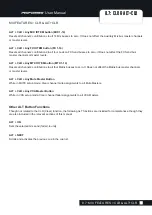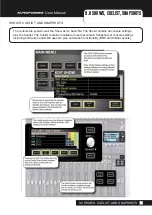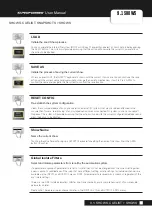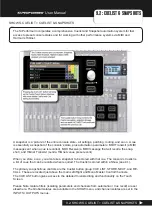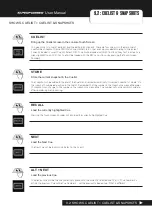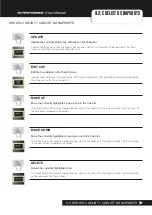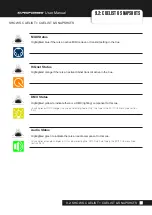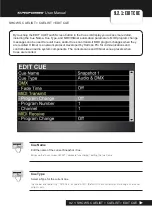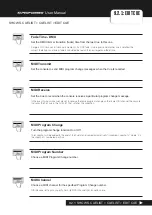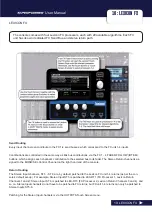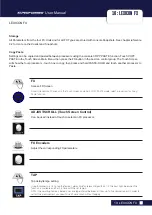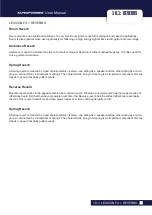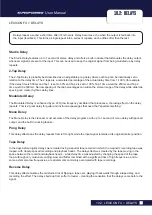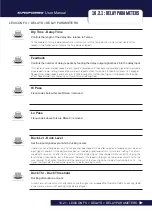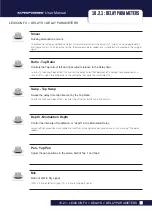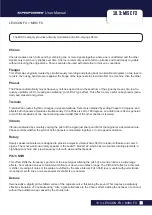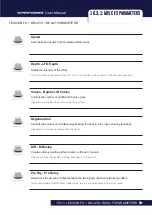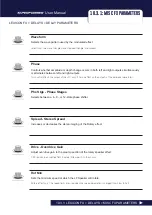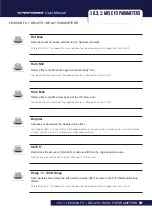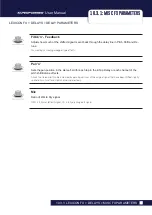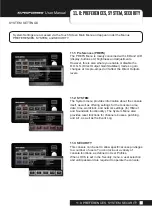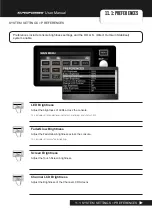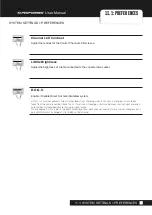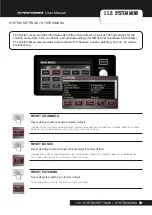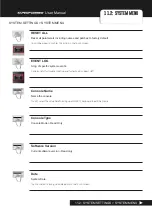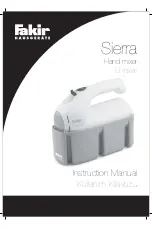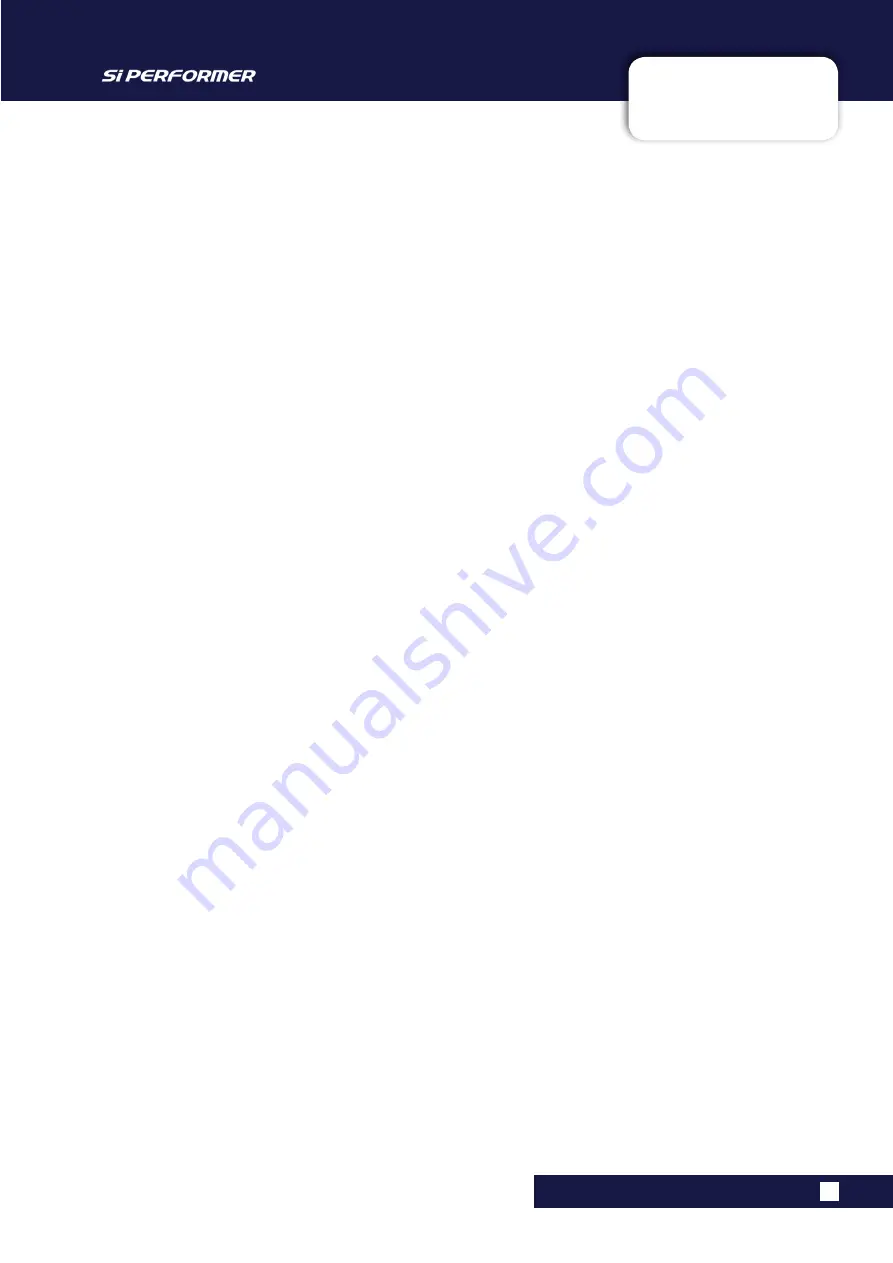
User Manual
10.1: REVERBS
LEXICON FX > REVERBS
10.1: LEXICON FX > REVERBS
Room Reverb
Room produces an excellent simulation of a very small room which is useful for dialogue and speech applications.
Room is also practical when used judiciously for fattening up high energy signals like electric guitar amp recordings.
Ambience
Reverb
Ambience is used to simulate the effect of a small or medium sized room without noticeable decay. It is often used for
voice, guitar or percussion.
Spring
Reverb
A Spring reverb is created by a pair of piezoelectric crystals—one acting as a speaker and the other acting as a micro-
phone—connected by a simple set of springs. The characteristic ‘boing’ of a spring is an important component of many
classic rock and rockabilly guitar sounds.
Reverse
Reverb
Reverse reverb works in the opposite fashion from normal reverb. Whereas a normal reverb has the loudest series of
reflections heard first that then become quieter over time, the Reverse reverb has the softest reflections (essentially
the tail of the reverb) heard first, and then grows louder over time until they abruptly cut off.
Spring
Reverb
A Spring reverb is created by a pair of piezoelectric crystals—one acting as a speaker and the other acting as a micro-
phone—connected by a simple set of springs. The characteristic ‘boing’ of a spring is an important component of many
classic rock and rockabilly guitar sounds.

